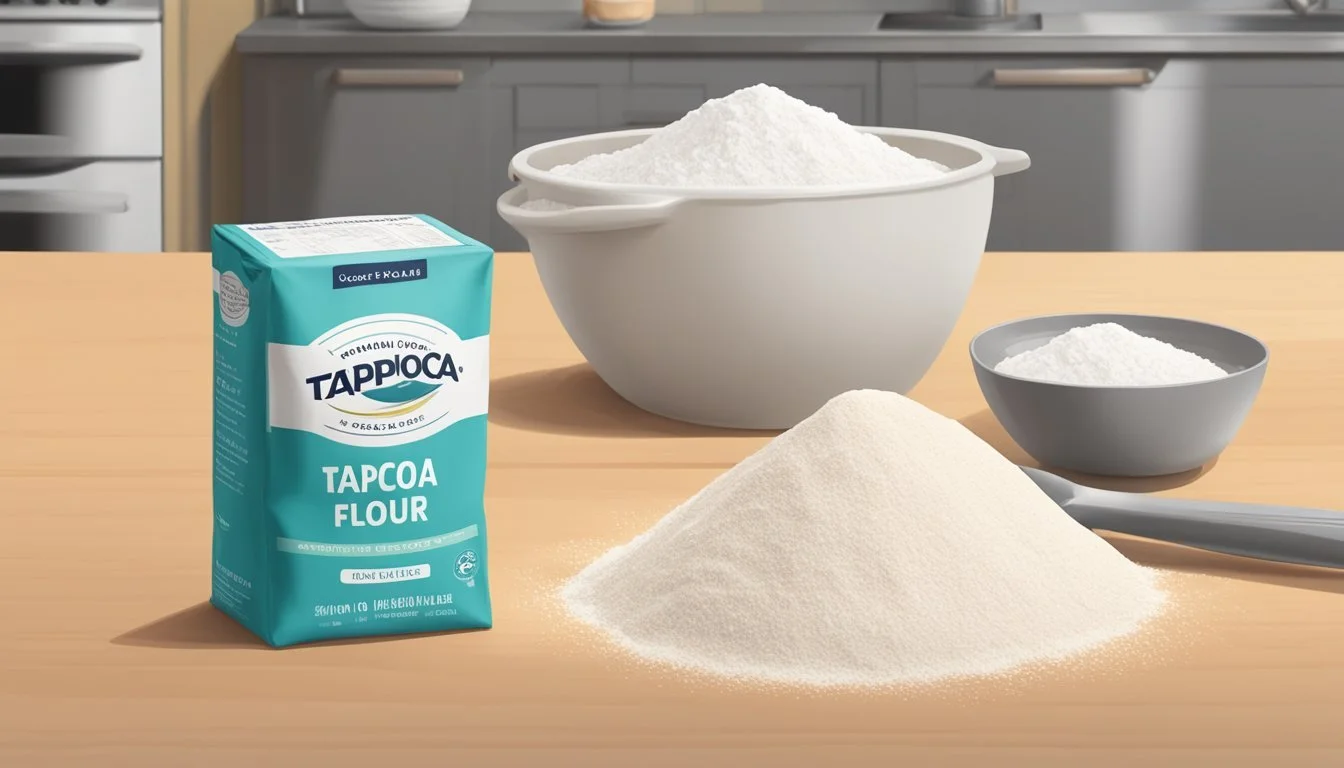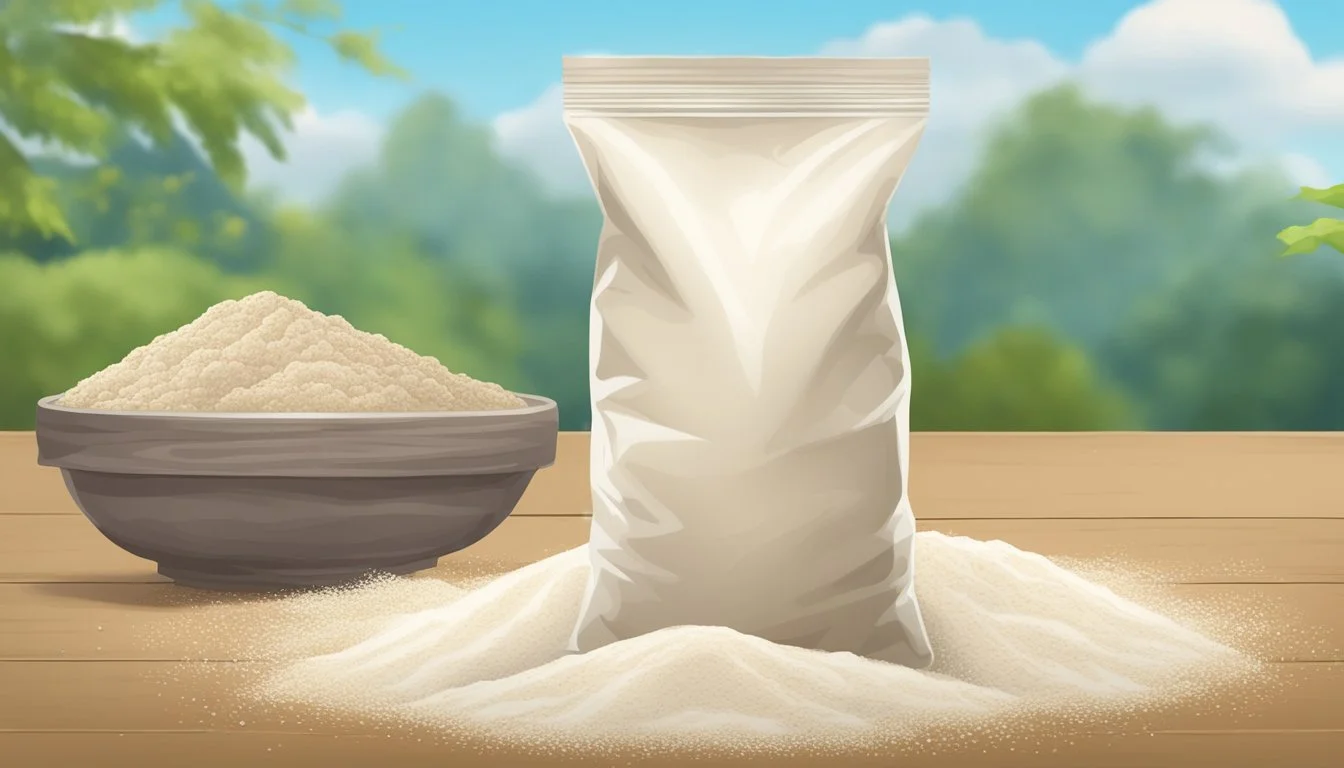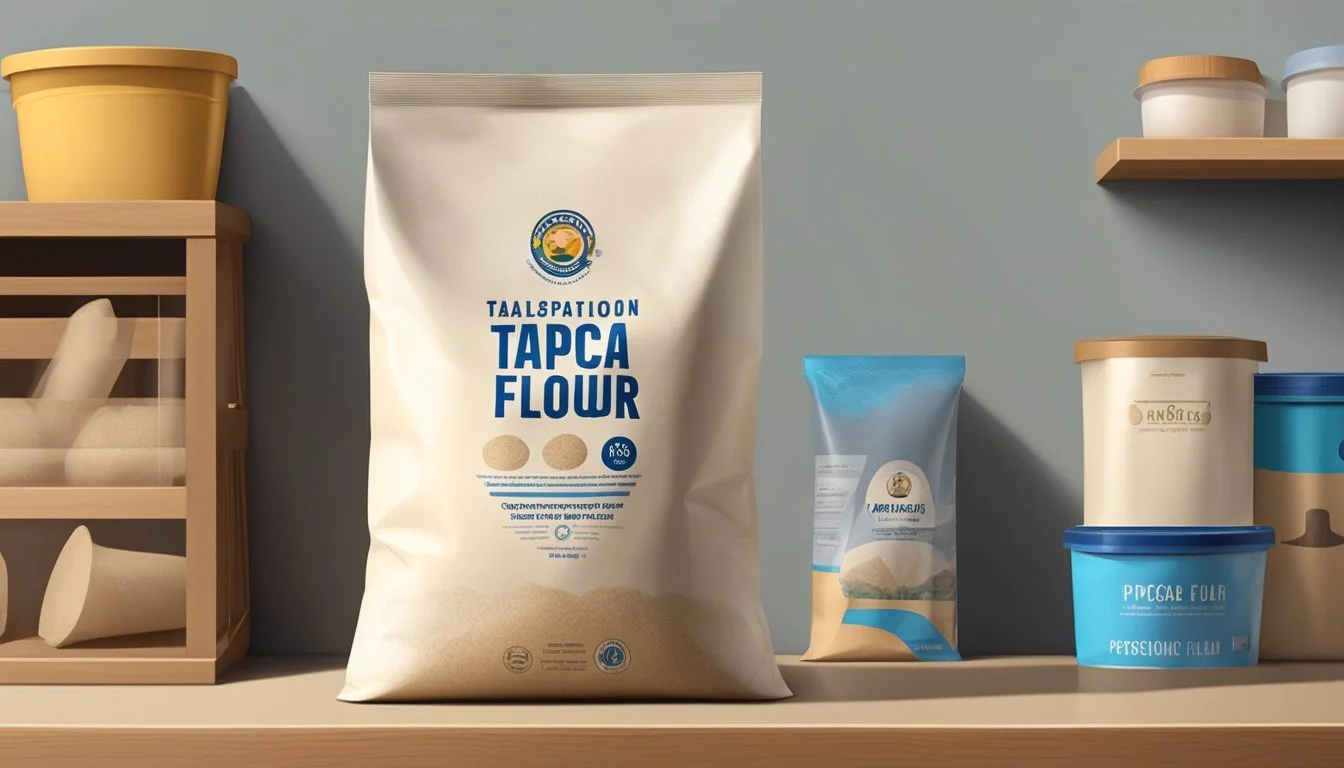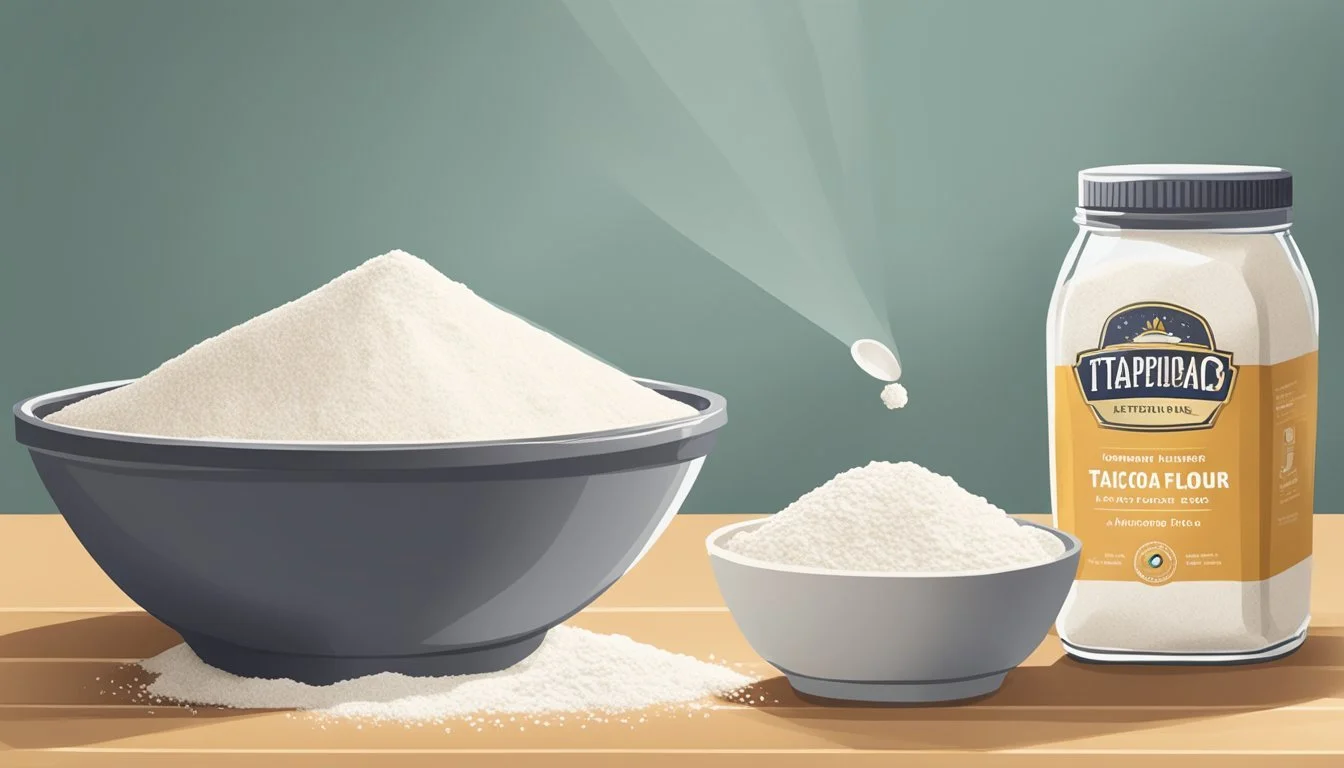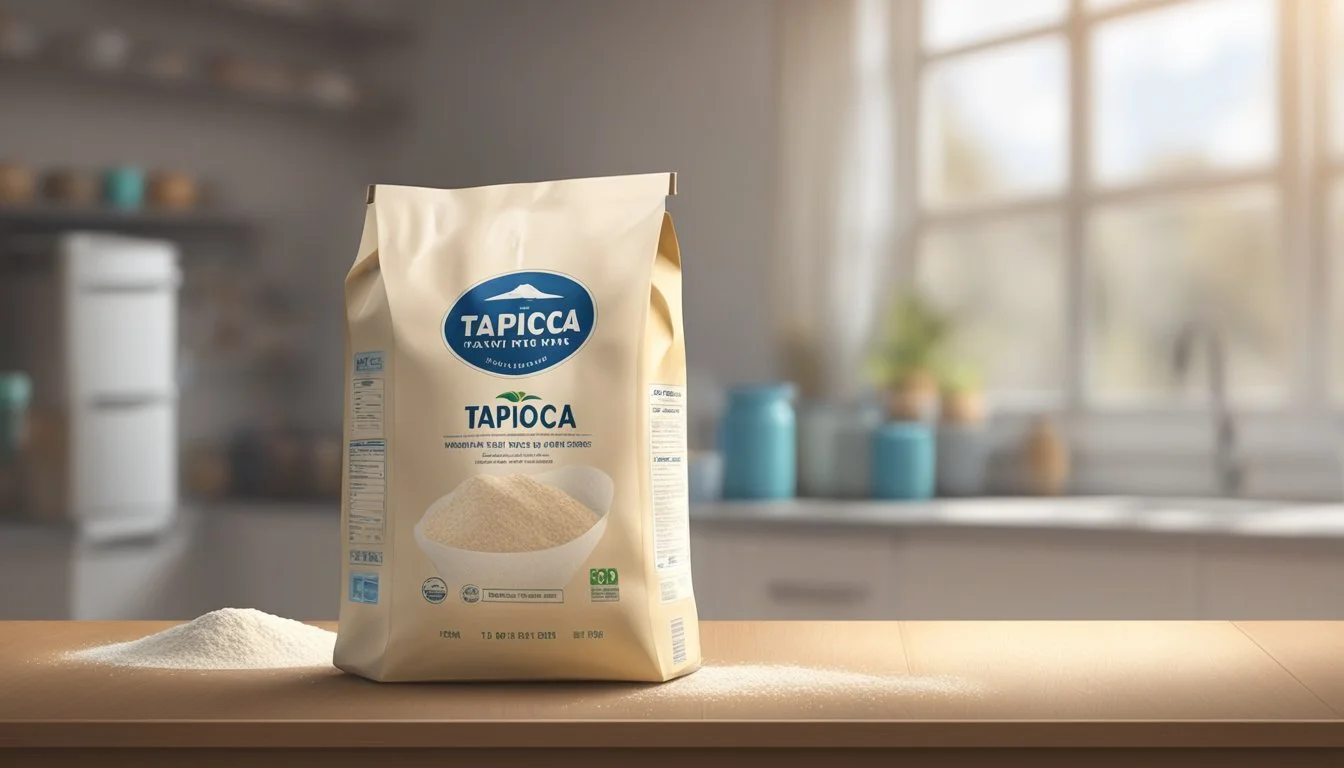Does Tapioca Flour Go Bad?
Understanding Shelf Life and Storage
Tapioca flour, a popular gluten-free option derived from the root of the cassava plant, is a staple in many kitchens due to its versatility in cooking and baking. Yes, tapioca flour does go bad. Unopened packages of tapioca flour can last up to 12 months if kept in a cool, dry pantry. However, once opened, it typically has a shorter shelf life of 6-8 months when stored in an airtight container.
The quality of tapioca flour can deteriorate quicker in environments with high humidity. Proper storage between 50°F and 70°F with low humidity is recommended to prevent spoilage. Indicators of spoilage include off odors, discoloration, and the presence of mold.
Understanding the shelf life and storage requirements of tapioca flour is essential for maintaining its quality. By keeping tapioca flour in the right conditions, you can ensure it remains fresh and safe for use in your favorite recipes.
Understanding Tapioca Flour
Tapioca flour is derived from the cassava root, a starchy tuber native to South America. This gluten-free flour is a popular alternative in many recipes for individuals with gluten intolerance or celiac disease.
Tapioca flour is known for its smooth texture, making it ideal for thickening soups, sauces, and gravies. It adds a chewy texture to baked goods, enhancing the consistency of gluten-free bread, cakes, and cookies.
The flour is primarily composed of carbohydrates, with minimal amounts of protein and fat. This nutritional profile makes it energy dense, but lower in other nutrients compared to more complex flours.
In terms of nutritional value, tapioca flour is relatively low in vitamins and minerals. However, it is an excellent source of easily digestible carbohydrates, which provide a quick energy boost.
Proper storage of tapioca flour is crucial to maintaining its quality. It should be kept in a cool, dry place with temperatures between 50°F and 70°F (10°C and 21°C) to avoid spoilage. Using airtight containers can prevent moisture and odor absorption from other foods.
To sum up, tapioca flour is a versatile ingredient that enhances the texture of gluten-free recipes while offering a straightforward nutritional profile dominated by carbohydrates.
Signs of Deterioration and Spoilage
Tapioca flour can spoil over time, exhibiting various signs that indicate it is no longer safe to use. Key indicators include changes in texture and flavor, as well as visible mold or discoloration.
Changes in Texture and Flavor
Texture is a primary indicator of tapioca flour's freshness. Fresh tapioca flour should be fine and free-flowing. When it starts to deteriorate, the flour may clump or harden due to moisture absorption. This clumping not only affects the usability but also compromises the quality.
Flavor changes are significant too. Tapioca flour that has gone rancid will emit an off-putting or bitter taste. The fats present in the flour oxidize, producing an unpleasant odor. Using rancid flour could lead to foodborne illnesses as toxins may develop, so such flour should be discarded immediately.
Visual Indicators of Spoilage
Visual inspection offers clear signs of spoilage. Mold growth is a definitive indicator that the tapioca flour has spoiled. If mold is visible, the entire batch should be discarded to avoid the risk of toxins. Discoloration is another concern. Fresh tapioca flour is typically white or off-white; any yellowing or darkening suggests deterioration.
Off odors, especially a musty or sour smell, often accompany visual markers of spoilage. These odors are strong signals that the flour is no longer safe for consumption. Paying close attention to these signs can prevent the use of spoiled tapioca flour.
Proper Storage Guidelines
To maintain the quality and extend the shelf life of tapioca flour, it should be stored properly with attention to factors like temperature, humidity, and light exposure. Storing tapioca flour in a cool, dry environment and using airtight containers are essential strategies.
Ideal Storage Conditions
Temperature: Tapioca flour should be stored at temperatures between 50°F and 70°F (10°C to 21°C). Extreme temperatures can degrade its quality and efficiency.
Humidity: Keep the flour in a low-humidity environment to prevent moisture absorption, which can lead to spoilage. High humidity accelerates the breakdown of the flour, so a dry place is crucial.
Light Exposure: Exposure to direct sunlight can deteriorate the quality. Quality is best preserved by storing the flour in a dark pantry or cupboard away from light. Airtight Containers should be used to prevent air and moisture from entering and contaminating the flour.
Handling: Avoid placing the flour near heat sources or in humid climates, which can further compromise its quality.
Extending Shelf Life Through Refrigeration
Refrigeration: While storing tapioca flour in the pantry is usually sufficient, refrigeration can further extend its freshness. This is particularly useful in humid climates.
Airtight Containers: When refrigerating, ensure the flour is in an airtight container to prevent it from absorbing any moisture or odors from other foods.
Freezer Storage: For long-term storage, tapioca flour can be kept in the freezer. Again, it's important to use airtight containers to avoid any moisture crystallization.
Handling: Label the container with the date of storage to keep track of its shelf life. Before using flour stored in the refrigerator or freezer, let it come to room temperature to avoid clumping.
Culinary Applications and Alternatives
Tapioca flour is a versatile ingredient with unique properties, making it ideal for various culinary uses. It's particularly valuable in gluten-free baking and as a staple in many traditional recipes. Discussing its applications in cooking and baking and exploring possible alternatives provides a comprehensive understanding for any cook or baker.
Tapioca Flour in Cooking and Baking
Tapioca flour, also known as tapioca starch, is prized as a gluten-free thickening agent. It is widely used in sauces, soups, gravies, and puddings to achieve a desired consistency. In baking, it is a crucial ingredient for anyone needing a gluten-free alternative, serving as a binder in gluten-free bread and pastry recipes.
In bubble tea, tapioca pearls made from tapioca flour offer the characteristic chewy texture. It's also common in Asian desserts. When storing tapioca flour, it is essential to keep it in an airtight container in a cool, dry place to prevent spoilage.
Alternatives to Tapioca Flour
Several alternatives can replace tapioca flour, each with its specific properties. Cornstarch is one of the most common substitutes, offering similar thickening power, although it might not provide the same glossy finish. For those preferring other starches, potato starch can be used, particularly in sauces and gravies.
For those needing gluten-free substitutes, cassava flour is a close relative to tapioca flour, derived from the same root. Nut flours, such as almond flour, can also be used but may alter the texture and flavor significantly. Each alternative has its unique characteristics, making it important to choose based on the desired outcome in the specific recipe.
Food Safety Considerations
Proper Storage of tapioca flour is essential to prevent spoilage and ensure safety. Keep it in an airtight container, in a cool, dry place, ideally between 50°F and 70°F (10°C to 21°C).
Humidity and light can affect tapioca flour. High humidity can lead to microbial growth, while exposure to light can degrade its quality. Avoid storing in areas prone to moisture or direct sunlight.
Microbial Growth can occur if tapioca flour is stored improperly. Signs of spoilage include off odors, discoloration, or mold. Discard any flour showing these signs to avoid foodborne illnesses.
Cross-Contamination is a risk if tapioca flour comes into contact with allergens or pests. Ensure that containers and storage areas are clean and free of potential contaminants. Use separate containers for different flours to mitigate this risk.
Pests, such as insects, can infest improperly stored tapioca flour. Airtight containers can help prevent pest contamination, maintaining the flour's safety and quality.
Allergies and dietary restrictions should be considered when handling tapioca flour. Make sure it is processed in facilities free from gluten if needed, as cross-contamination can occur during processing.
Regular inspection of tapioca flour for any signs of spoilage ensures its safe use in cooking and baking. Store it correctly to maintain its quality and extend its shelf life.


